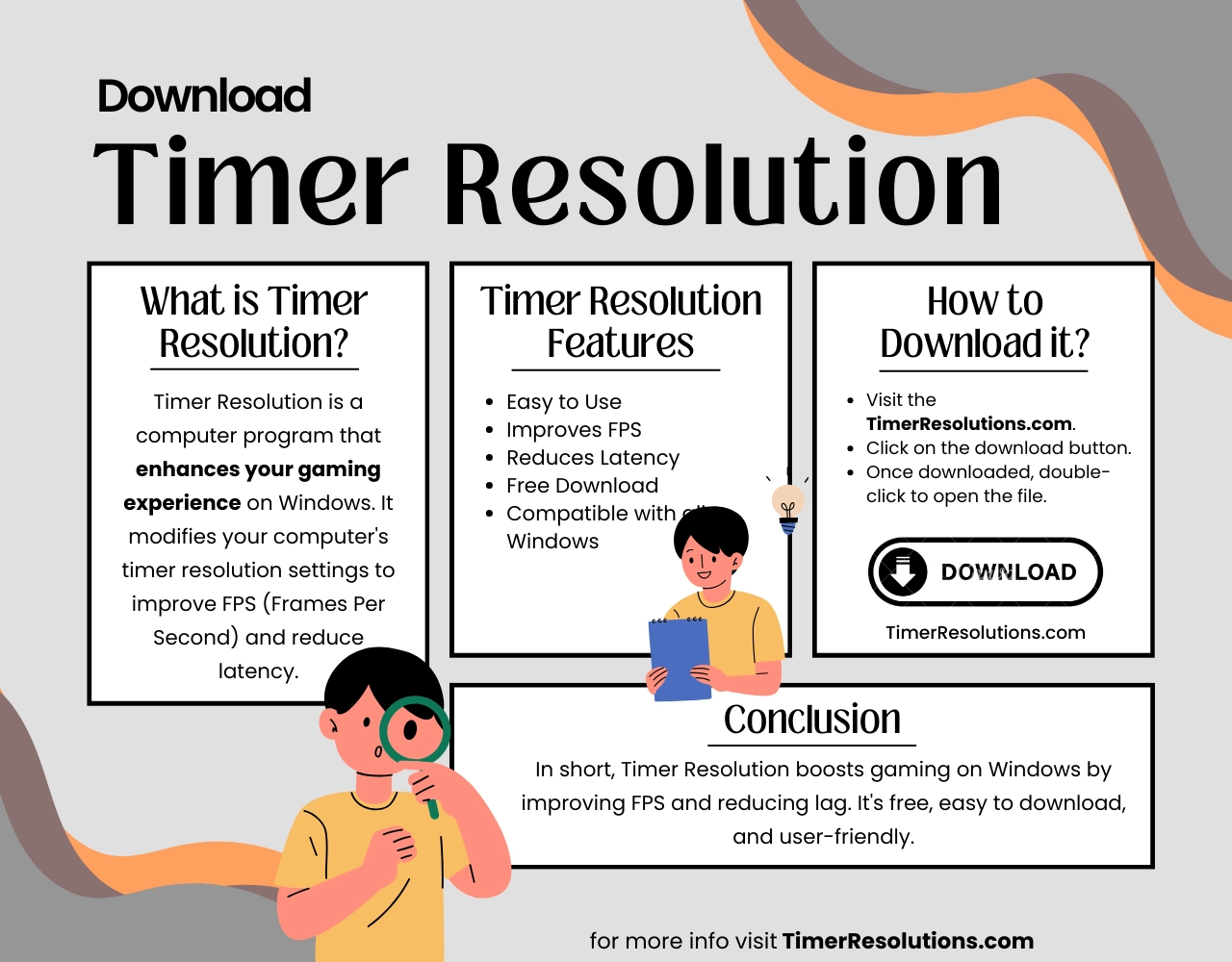Timer resolution is a crucial aspect of system performance often overlooked by many users. In computing, timer resolution refers to the interval at which a system checks the accuracy of its internal clock. This resolution plays a significant role in various tasks, including gaming, multimedia processing, and overall system responsiveness.
The Mechanics Behind Timer Resolution
Timer resolution is measured in milliseconds (ms), indicating the smallest unit of time a system can recognize. For instance, a timer resolution of 1 ms means the system updates its clock every millisecond. The lower the resolution, the more frequently the system checks its clock, resulting in finer-grained timing accuracy.
However achieving a high timer:
resolution comes with trade-offs. While it enhances accuracy, it can also increase system resource consumption. This is because the system needs to allocate more processing power to maintain the finer-grained timing.
The Role of Timer Resolution in Gaming
In the gaming world, even slight delays can significantly impact the gaming experience. Timer resolution plays a critical role in ensuring smooth gameplay by reducing input lag and improving overall responsiveness. Gamers often seek to optimize timer resolution settings to achieve the best performance possible.
Debunking Myths Surrounding Timer Resolution
There have been various claims about the effectiveness of adjusting timer resolution in improving system performance. Some argue that lowering the timer resolution can boost frame rates and reduce stuttering in time resolution games, while others believe it has minimal impact. Let’s delve deeper into the reality behind these claims.
Does Adjusting Timer Resolution Really Work?
While adjusting timer resolution can theoretically improve system responsiveness and reduce input lag, its practical impact depends on various factors, including hardware configuration, software optimization, and specific use cases. In some scenarios, users may notice a tangible difference after tweaking timer resolution settings, while in others, the effect may be negligible.
Best Practices for Optimizing Timer Resolution
For users keen on optimizing their system’s timer resolution, here are some best practices to consider:Understand your system’s capabilities: Before making any changes, familiarize yourself with your system’s hardware specifications and software requirements. Not all systems may benefit from tweaking timer resolution settings.
Experiment cautiously:
Adjust timer resolution settings incrementally and monitor the system’s performance changes. This approach allows you to gauge the impact of each adjustment accurately.Prioritize stabilityWhile optimizing timer resolution can enhance performance, stability should always remain a top priority. Avoid pushing your system beyond its limits, as this could lead to instability and potential system crashes.
Keep software up-to-date:
Ensure your operating system and drivers are up-to-date, as software updates often include performance optimizations that can complement changes in timer resolution.
Conclusion:
Timer resolution plays a crucial role in determining system performance, particularly in gaming and multimedia applications. While adjusting timer resolution settings can potentially enhance responsiveness and reduce input lag, its practical impact may vary based on individual system configurations and use cases. By understanding the mechanics behind timer resolution and following best practices for optimization, users can unlock the full potential of their systems while maintaining stability and reliability.
- Can I watch movies in different languages on FilmyMeet? - March 5, 2024
- Does Khatrimaza have a download limit? - March 2, 2024
- How long does it take for new movies to appear on Khatrimaza after their release? - February 27, 2024
